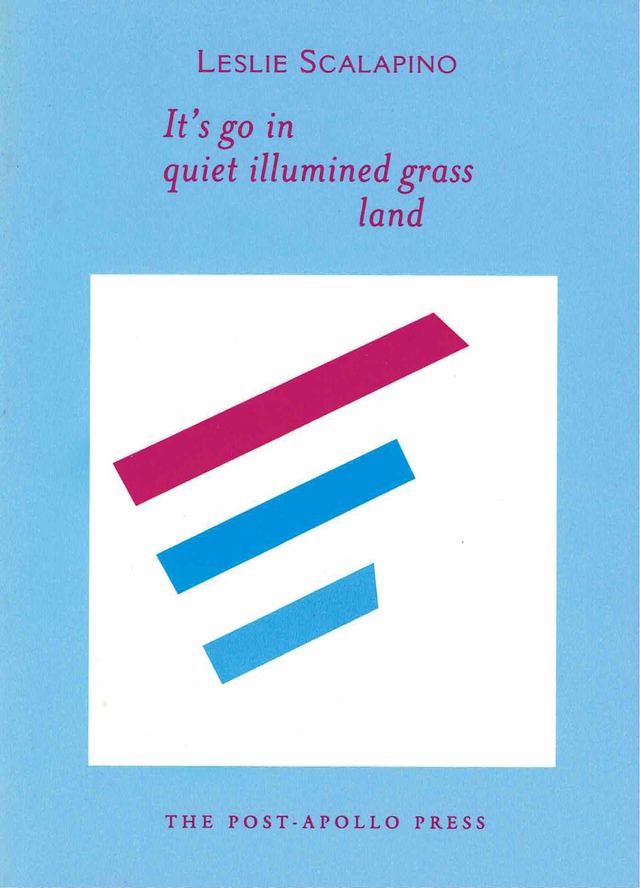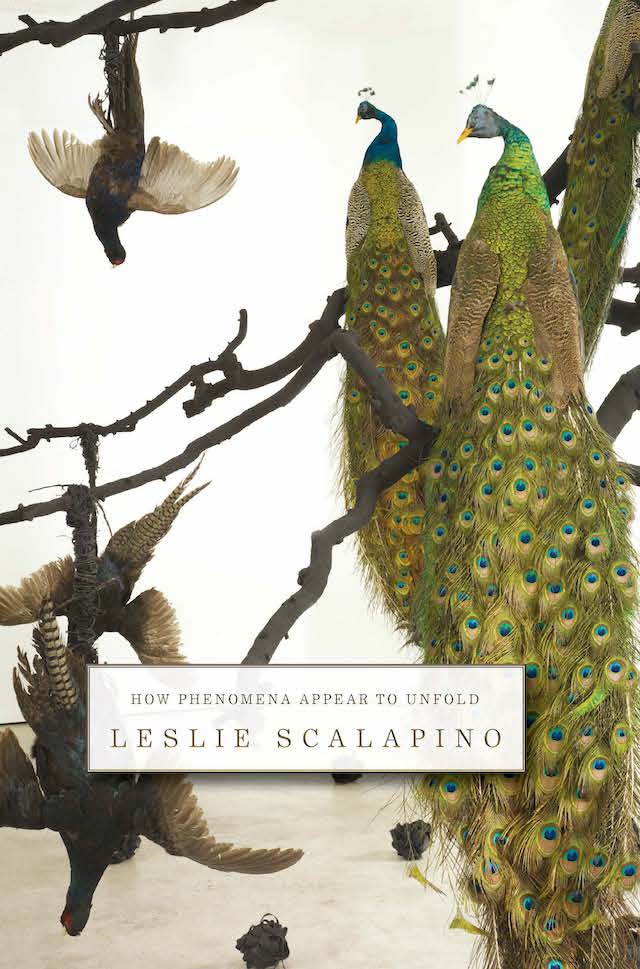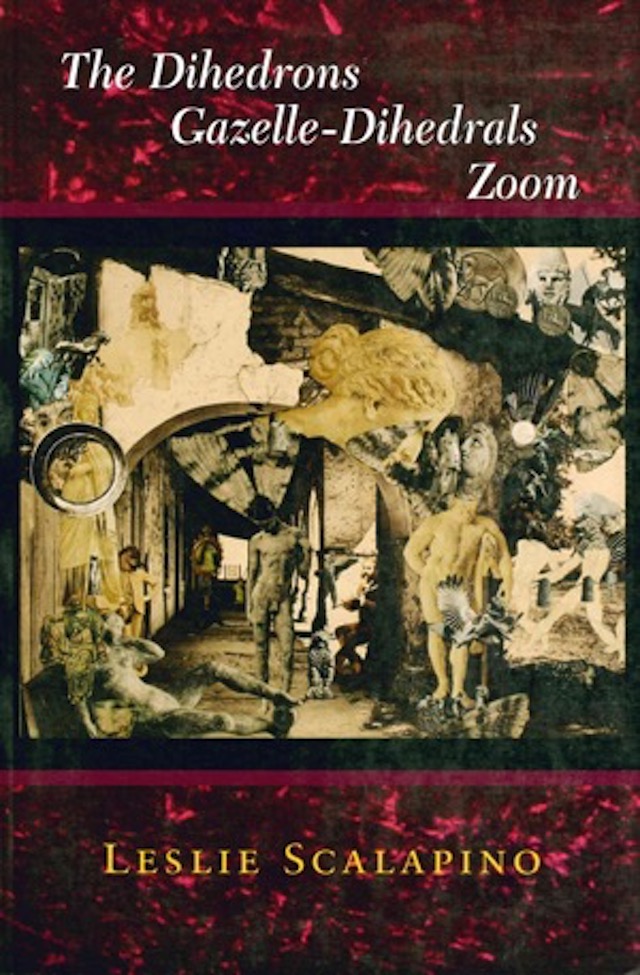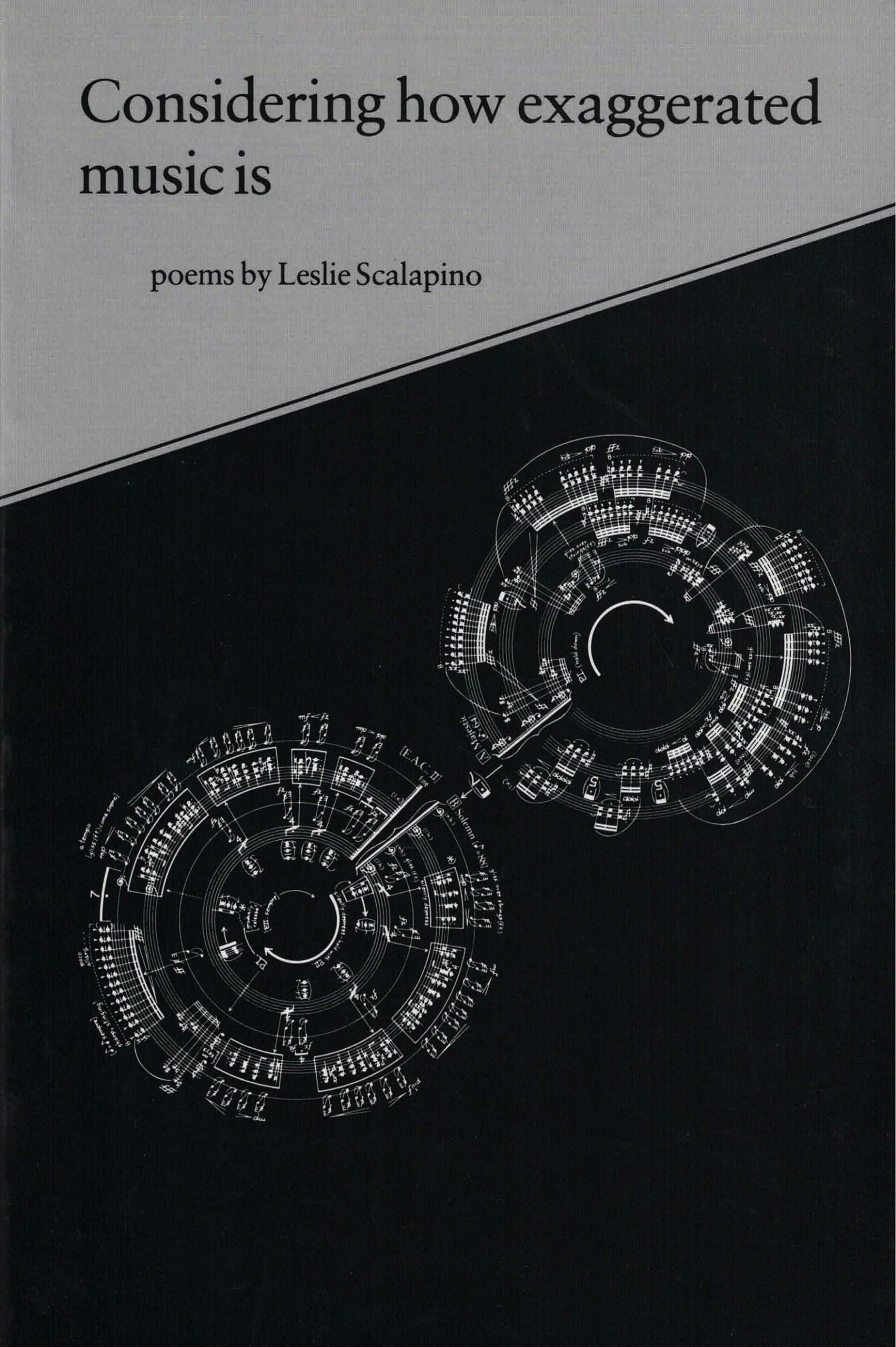It’s Go In/ Quiet Illumined Grass/ Land
By Leslie Scalapino
From the Contemporary Poetry Series #1
In It’s go in/ quiet illumined grass/ land, Leslie Scalapino enters a conversation, through poetry, with sculptor Petah Coyne. Scalapino and Coyne each created a series of pieces in a process of exchange (conversation, faxes of text, photos of sculptures). The poem is about the line between or conjunction of “one” and horizon, dawn, evening, death (of a friend), weather, people walking on the street.
Leslie Scalapino
Praise for It’s Go In/ Quiet Illumined Grass/ Land
An enlightened work singing of death, physical pain, social fearfulness, and where when or whether one is. The intricate variable stanza, almost danced (like a Greek strophe) sounds one of Scalapino’s favorite themes: inside and outside, the cruelty outside and the illumination also there, as in here, in space and in time. The stanza leads one through the space and time of the poem word by word. You can’t stop.
— Alice Notley
In the interior light of night perception and emotion toss the mirror aware to and fro. Leslie Scalapino notes that its flicker, looked through, is time: pain in the landscape of bone: a silent movie if nerves have language (amuse itself with music and rhythm). I read it first on a computer screen and the elegance of its argument kept me scrolling the pulsating spine to the end.
— Tom Raworth
It’s go in/ quiet illumined grass/ land seems to me to articulate Scalapino’s concerns about poetic space in relation to social space, and the personal, with the most moving and radical gestures I can imagine. The real edge, a desperate one in the best sense, since what otherwise is there? It’s challenging and exciting, as when we come to an actual page, then a series of them, astonished at the advance.
— Michael Palmer




